SLVS919C January 2009 – September 2015 TPS54060
PRODUCTION DATA.
- 1 Features
- 2 Applications
- 3 Description
- 4 Revision History
- 5 Pin Configuration and Functions
-
6 Specifications
- 6.1 Absolute Maximum Ratings
- 6.2 ESD Ratings
- 6.3 Recommended Operating Conditions
- 6.4 Thermal Information
- 6.5 Electrical Characteristics
- 6.6 Timing Resistor and External Clock (RT/CLK Pin) Timing Requirements
- 6.7 Timing Resistor and External Clock (RT/CLK PIN) Switching Characteristics
- 6.8 Typical Characteristics
-
7 Detailed Description
- 7.1 Overview
- 7.2 Functional Block Diagram
- 7.3
Feature Description
- 7.3.1 Fixed Frequency PWM Control
- 7.3.2 Slope Compensation Output Current
- 7.3.3 Pulse Skip Eco-mode
- 7.3.4 Low Dropout Operation and Bootstrap Voltage (BOOT)
- 7.3.5 Error Amplifier
- 7.3.6 Voltage Reference
- 7.3.7 Slow Start/Tracking Pin (SS/TR)
- 7.3.8 Overload Recovery Circuit
- 7.3.9 Constant Switching Frequency and Timing Resistor (RT/CLK Pin)
- 7.3.10 Overcurrent Protection and Frequency Shift
- 7.3.11 Power Good (PWRGD Pin)
- 7.3.12 Overvoltage Transient Protection
- 7.3.13 Thermal Shutdown
- 7.3.14 Small Signal Model for Loop Response
- 7.3.15 Simple Small Signal Model for Peak Current Mode Control
- 7.3.16 Small Signal Model for Frequency Compensation
- 7.4 Device Functional Modes
-
8 Application and Implementation
- 8.1 Application Information
- 8.2
Typical Applications
- 8.2.1
Buck Converter for 3.3-V Output
- 8.2.1.1 Design Requirements
- 8.2.1.2
Detailed Design Procedure
- 8.2.1.2.1 Selecting the Switching Frequency
- 8.2.1.2.2 Output Inductor Selection (LO)
- 8.2.1.2.3 Output Capacitor
- 8.2.1.2.4 Catch Diode
- 8.2.1.2.5 Input Capacitor
- 8.2.1.2.6 Slow Start Capacitor
- 8.2.1.2.7 Bootstrap Capacitor Selection
- 8.2.1.2.8 Undervoltage Lockout (UVLO) Set Point
- 8.2.1.2.9 Output Voltage and Feedback Resistors Selection
- 8.2.1.2.10 Compensation
- 8.2.1.2.11 Discontinuous Mode and Eco Mode Boundary
- 8.2.1.2.12 Power Dissipation Estimate
- 8.2.1.3 Application Curves
- 8.2.2 Inverting Power Supply
- 8.2.3 Split Rail Power Supply
- 8.2.1
Buck Converter for 3.3-V Output
- 9 Power Supply Recommendations
- 10Layout
- 11Device and Documentation Support
- 12Mechanical, Packaging, and Orderable Information
Package Options
Mechanical Data (Package|Pins)
Thermal pad, mechanical data (Package|Pins)
Orderable Information
6 Specifications
6.1 Absolute Maximum Ratings(1)
Over operating temperature range (unless otherwise noted).| MIN | MAX | UNIT | ||
|---|---|---|---|---|
| Voltage | VIN | –0.3 | 65 | V |
| EN | –0.3 | 5 | ||
| VSENSE | –0.3 | 3 | ||
| COMP | –0.3 | 3 | ||
| PWRGD | –0.3 | 6 | ||
| SS/TR | –0.3 | 3 | ||
| RT/CLK | –0.3 | 3.6 | ||
| BOOT-PH | –0.3 | 8 | ||
| PH | –0.6 | 65 | ||
| PH, 10-ns Transient | –2 | 65 | ||
| Voltage Difference | Thermal PAD to GND | ±200 | mV | |
| Source current | EN | 100 | μA | |
| BOOT | 100 | mA | ||
| VSENSE | 10 | μA | ||
| PH | Current Limit | A | ||
| RT/CLK | 100 | μA | ||
| Sink current | VIN | Current Limit | A | |
| COMP | 100 | μA | ||
| PWRGD | 10 | mA | ||
| SS/TR | 200 | μA | ||
| Operating junction temperature | –40 | 150 | °C | |
| Storage temperature | –65 | 150 | °C | |
(1) Stresses beyond those listed under absolute maximum ratings may cause permanent damage to the device. These are stress ratings only and functional operation of the device at these or any other conditions beyond those indicated under recommended operating conditions is not implied. Exposure to absolute-maximum-rated conditions for extended periods may affect device reliability.
6.2 ESD Ratings
| VALUE | UNIT | |||
|---|---|---|---|---|
| V(ESD) | Electrostatic discharge | Human-body model (HBM), per ANSI/ESDA/JEDEC JS-001(1) | ±1000 | V |
| Charged-device model (CDM), per JEDEC specification JESD22-C101(2) | ±500 | |||
(1) JEDEC document JEP155 states that 500-V HBM allows safe manufacturing with a standard ESD control process.
(2) JEDEC document JEP157 states that 250-V CDM allows safe manufacturing with a standard ESD control process.
6.3 Recommended Operating Conditions
over operating free-air temperature range (unless otherwise noted)| MIN | MAX | UNIT | ||
|---|---|---|---|---|
| Supply input voltage, VVIN | 3.5 | 60 | V | |
| Output voltage, VO | 0.8 | 57 | V | |
| Output current, IO | 0 | 0.5 | A | |
| Operating junction temperature, TJ | -40 | 150 | °C | |
6.4 Thermal Information
| THERMAL METRIC(1)(2)(2) | TPS54060 | UNIT | ||
|---|---|---|---|---|
| DGQ (VSSOP) | DRC (VSON) | |||
| 10 PINS | 10 PINS | |||
| RθJA | Junction-to-ambient thermal resistance (standard board) | 62.5 | 40 | °C/W |
| RθJA | Junction-to-ambient thermal resistance (custom board) (3) | 57 | 56.5 | °C/W |
| ψJT | Junction-to-top characterization parameter | 1.7 | 0.6 | °C/W |
| ψJB | Junction-to-board characterization parameter | 20.1 | 7.5 | °C/W |
| RθJC(top) | Junction-to-case(top) thermal resistance | 83 | 65 | °C/W |
| RθJC(bot) | Junction-to-case(bottom) thermal resistance | 21 | 7.8 | °C/W |
| RθJB | Junction-to-board thermal resistance | 28 | 8 | °C/W |
(1) For more information about traditional and new thermal metrics, see the Semiconductor and IC Package Thermal Metrics application report, SPRA953.
(2) Power rating at a specific ambient temperature TA should be determined with a junction temperature of 150°C. This is the point where distortion starts to substantially increase. See power dissipation estimate in application section of this data sheet for more information.
(3) Test boards conditions:
- 3 inches x 3 inches, 2 layers, thickness: 0.062 inch
- 2 oz. copper traces located on the top of the PCB
- 2 oz. copper ground plane, bottom layer
- 6 thermal vias (13mil) located under the device package
6.5 Electrical Characteristics
TJ = –40°C to 150°C, VIN = 3.5 to 60 V (unless otherwise noted)| PARAMETER | TEST CONDITIONS | MIN | TYP | MAX | UNIT | ||
|---|---|---|---|---|---|---|---|
| SUPPLY VOLTAGE (VIN PIN) | |||||||
| Operating input voltage | 3.5 | 60 | V | ||||
| Internal undervoltage lockout threshold | No voltage hysteresis, rising and falling | 2.5 | V | ||||
| Shutdown supply current | EN = 0 V, 25°C, 3.5 V ≤ VIN ≤ 60 V | 1.3 | 4 | μA | |||
| Operating : nonswitching supply current | VSENSE = 0.83 V, VIN = 12 V, 25°C | 116 | 136 | ||||
| ENABLE AND UVLO (EN PIN) | |||||||
| Enable threshold voltage | No voltage hysteresis, rising and falling, 25°C | 0.9 | 1.25 | 1.55 | V | ||
| Input current | Enable threshold +50 mV | –3.8 | μA | ||||
| Enable threshold –50 mV | –0.9 | ||||||
| Hysteresis current | –2.9 | μA | |||||
| VOLTAGE REFERENCE | |||||||
| Voltage reference | TJ = 25°C | 0.792 | 0.8 | 0.808 | V | ||
| 0.784 | 0.8 | 0.816 | |||||
| HIGH-SIDE MOSFET | |||||||
| On-resistance | VIN = 3.5 V, BOOT-PH = 3 V | 300 | mΩ | ||||
| VIN = 12 V, BOOT-PH = 6 V | 200 | 410 | |||||
| ERROR AMPLIFIER | |||||||
| Input current | 50 | nA | |||||
| Error amplifier transconductance (gM) | –2 μA < ICOMP < 2 μA, VCOMP = 1 V | 97 | μS | ||||
| Error amplifier transconductance (gM) during slow start | –2 μA < ICOMP < 2 μA, VCOMP = 1 V, VVSENSE = 0.4 V |
26 | μS | ||||
| Error amplifier dc gain | VVSENSE = 0.8 V | 10,000 | V/V | ||||
| Error amplifier bandwidth | 2700 | kHz | |||||
| Error amplifier source/sink | V(COMP) = 1 V, 100 mV overdrive | ±7 | μA | ||||
| COMP to switch current transconductance | 1.9 | A/V | |||||
| CURRENT LIMIT | |||||||
| Current limit threshold | VIN = 12 V, TJ = 25°C | 0.6 | 0.94 | A | |||
| THERMAL SHUTDOWN | |||||||
| Thermal shutdown | 182 | °C | |||||
| SLOW START AND TRACKING (SS/TR) | |||||||
| Charge current | VSS/TR = 0.4 V | 2 | μA | ||||
| SS/TR-to-VSENSE matching | VSS/TR = 0.4 V | 45 | mV | ||||
| SS/TR-to-reference crossover | 98% nominal | 1.0 | V | ||||
| SS/TR discharge current (overload) | VSENSE = 0 V, V(SS/TR) = 0.4 V | 112 | μA | ||||
| SS/TR discharge voltage | VSENSE = 0 V | 54 | mV | ||||
| POWER GOOD (PWRGD PIN) | |||||||
| VVSENSE | VSENSE threshold | VSENSE falling | 92% | ||||
| VSENSE rising | 94% | ||||||
| VSENSE rising | 109% | ||||||
| VSENSE falling | 107% | ||||||
| Hysteresis | VSENSE falling | 2% | |||||
| Output high leakage | VSENSE = VREF, V(PWRGD) = 5.5 V, 25°C | 10 | nA | ||||
| On resistance | I(PWRGD) = 3 mA, VSENSE < 0.79 V | 50 | Ω | ||||
| Minimum VIN for defined output | V(PWRGD) < 0.5 V, II(PWRGD) = 100 μA | 0.95 | 1.5 | V | |||
6.6 Timing Resistor and External Clock (RT/CLK Pin) Timing Requirements
| MIN | TYP | MAX | UNIT | ||
|---|---|---|---|---|---|
| Minimum CLK input pulse width | 40 | ns | |||
| RT/CLK falling edge to PH rising edge delay | 60 | ns | |||
6.7 Timing Resistor and External Clock (RT/CLK PIN) Switching Characteristics
over operating free-air temperature range (unless otherwise noted)| PARAMETER | TEST CONDITIONS | MIN | TYP | MAX | UNIT | |
|---|---|---|---|---|---|---|
| fSW | Switching frequency | RT = 200 kΩ | 450 | 581 | 720 | kHz |
| Switching Frequency Range using RT mode | 100 | 2500 | kHz | |||
| Switching frequency range using CLK mode | 300 | 2200 | kHz | |||
| PLL lock in time | Measured at 500 kHz | 100 | μs | |||
6.8 Typical Characteristics
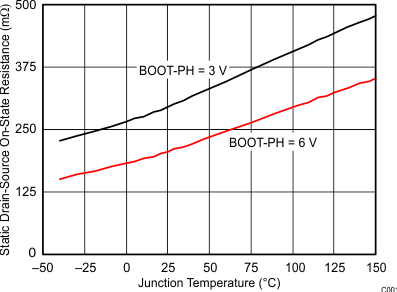 Figure 1. ON Resistance vs Junction Temperature
Figure 1. ON Resistance vs Junction Temperature
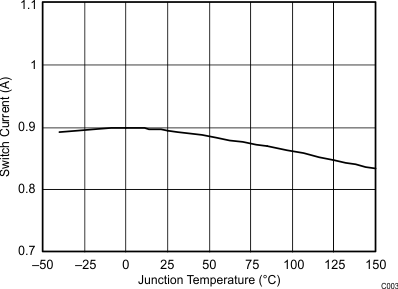 Figure 3. Switch Current Limit vs Junction Temperature
Figure 3. Switch Current Limit vs Junction Temperature
 Figure 5. Switching Frequency vs RT/CLK Resistance High Frequency Range
Figure 5. Switching Frequency vs RT/CLK Resistance High Frequency Range
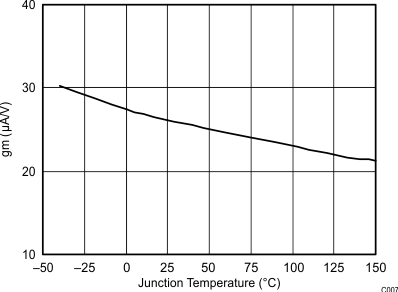 Figure 7. EA Transconductance During Slow Start vs Junction Temperature
Figure 7. EA Transconductance During Slow Start vs Junction Temperature
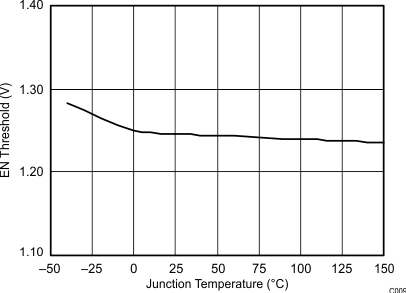 Figure 9. EN Pin Voltage vs Junction Temperature
Figure 9. EN Pin Voltage vs Junction Temperature
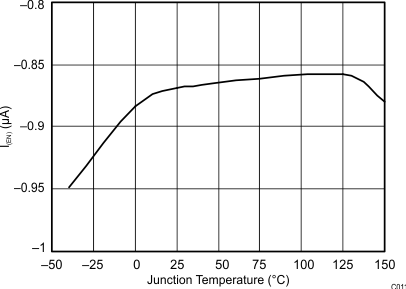 Figure 11. EN Pin Current vs Junction Temperature
Figure 11. EN Pin Current vs Junction Temperature
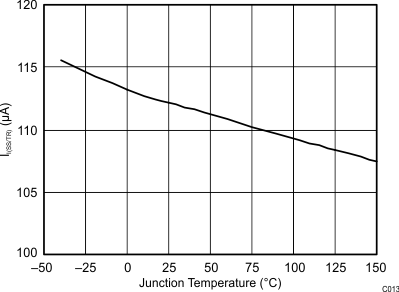 Figure 13. SS/TR Discharge Current vs Junction Temperature
Figure 13. SS/TR Discharge Current vs Junction Temperature
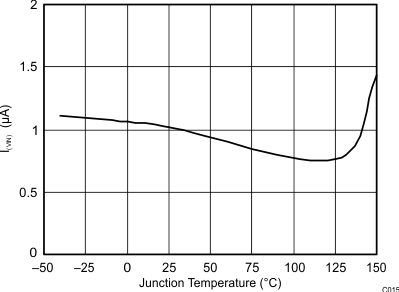 Figure 15. Shutdown Supply Current vs Junction Temperature
Figure 15. Shutdown Supply Current vs Junction Temperature
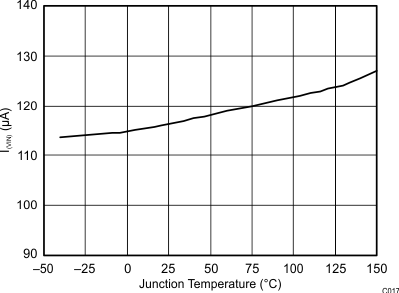 Figure 17. VIN Supply Current vs Junction Temperature
Figure 17. VIN Supply Current vs Junction Temperature
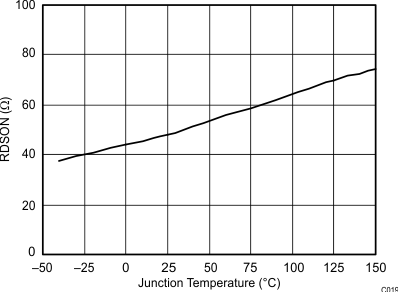 Figure 19. PWRGD ON Resistance vs Junction Temperature
Figure 19. PWRGD ON Resistance vs Junction Temperature
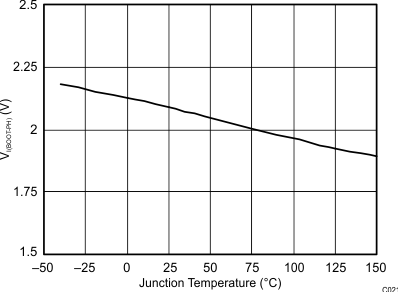 Figure 21. BOOT-PH UVLO vs Junction Temperature
Figure 21. BOOT-PH UVLO vs Junction Temperature
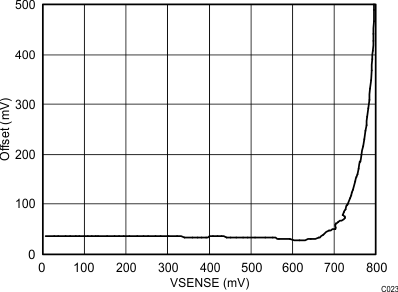 Figure 23. SS/TR TO VSENSE Offset vs VSENSE
Figure 23. SS/TR TO VSENSE Offset vs VSENSE
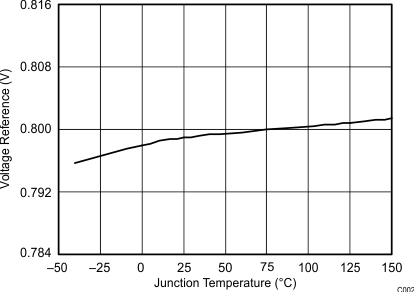 Figure 2. Voltage Reference vs Junction Temperature
Figure 2. Voltage Reference vs Junction Temperature
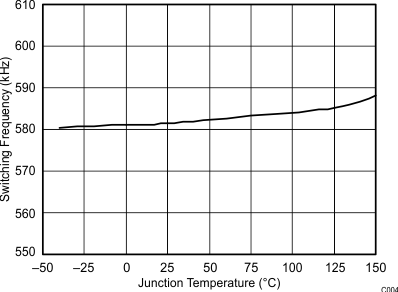 Figure 4. Switching Frequency vs Junction Temperature
Figure 4. Switching Frequency vs Junction Temperature
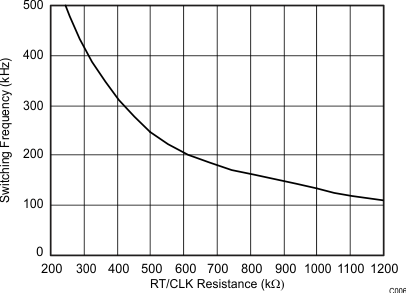 Figure 6. Switching Frequency vs RT/CLK Resistance Low Frequency Range
Figure 6. Switching Frequency vs RT/CLK Resistance Low Frequency Range
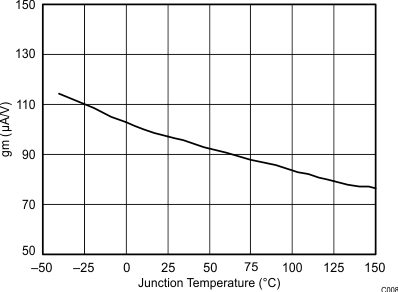 Figure 8. EA Transconductance vs Junction Temperature
Figure 8. EA Transconductance vs Junction Temperature
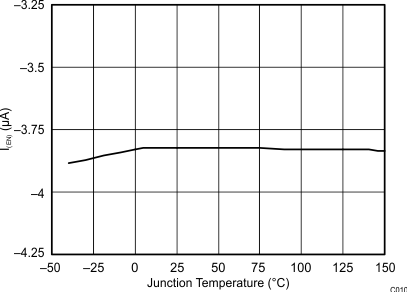 Figure 10. EN Pin Current vs Junction Temperature
Figure 10. EN Pin Current vs Junction Temperature
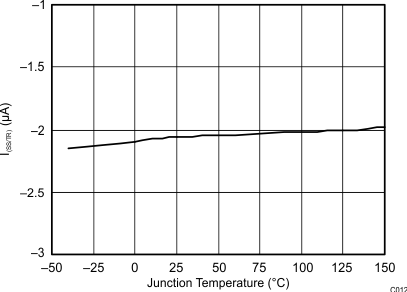 Figure 12. SS/TR Charge Current vs Junction Temperature
Figure 12. SS/TR Charge Current vs Junction Temperature
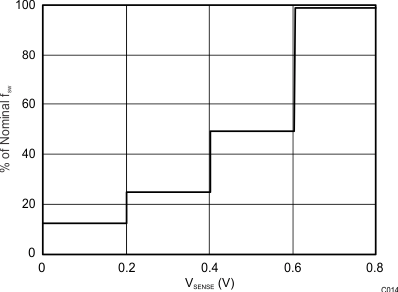 Figure 14. Switching Frequency vs VSENSE
Figure 14. Switching Frequency vs VSENSE
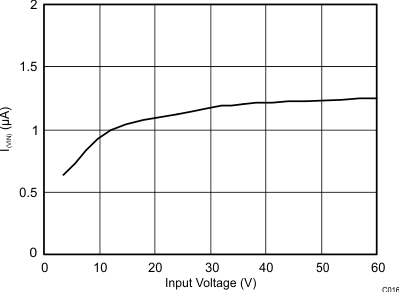 Figure 16. Shutdown Supply Current vs Input Voltage (Vin)
Figure 16. Shutdown Supply Current vs Input Voltage (Vin)
 Figure 18. VIN Supply Current vs Input Voltage
Figure 18. VIN Supply Current vs Input Voltage
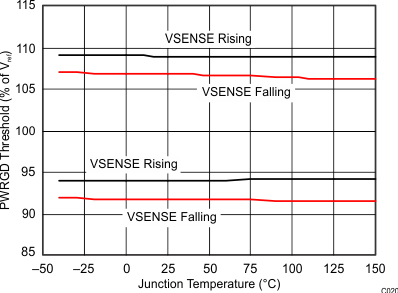 Figure 20. PWRGD Threshold vs Junction Temperature
Figure 20. PWRGD Threshold vs Junction Temperature
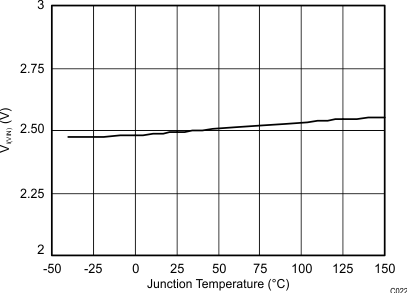 Figure 22. Input Voltage (UVLO) vs Junction Temperature
Figure 22. Input Voltage (UVLO) vs Junction Temperature
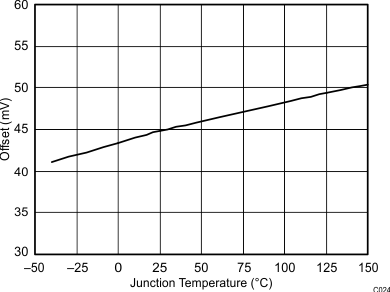 Figure 24. SS/TR TO VSENSE Offset vs Temperature
Figure 24. SS/TR TO VSENSE Offset vs Temperature